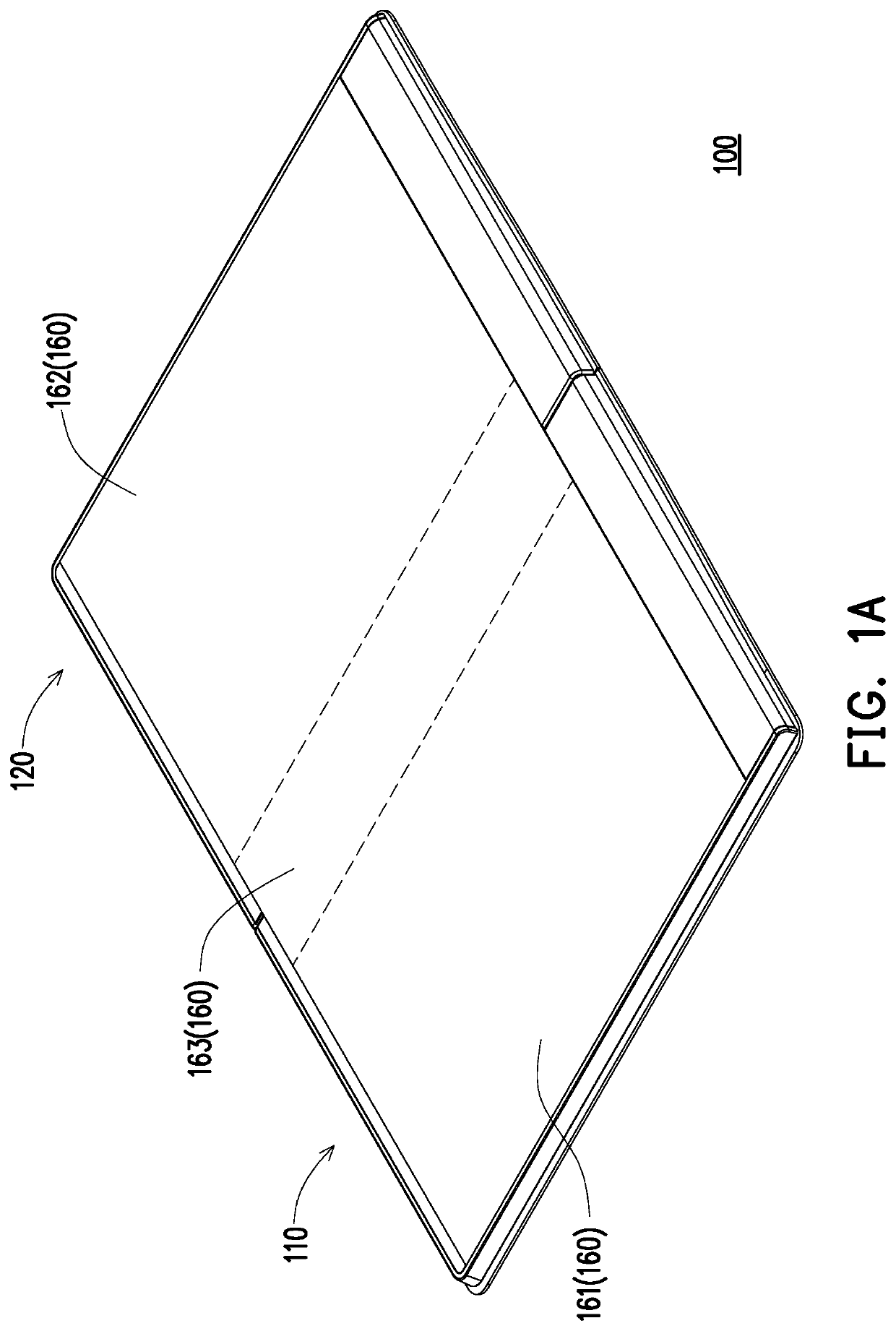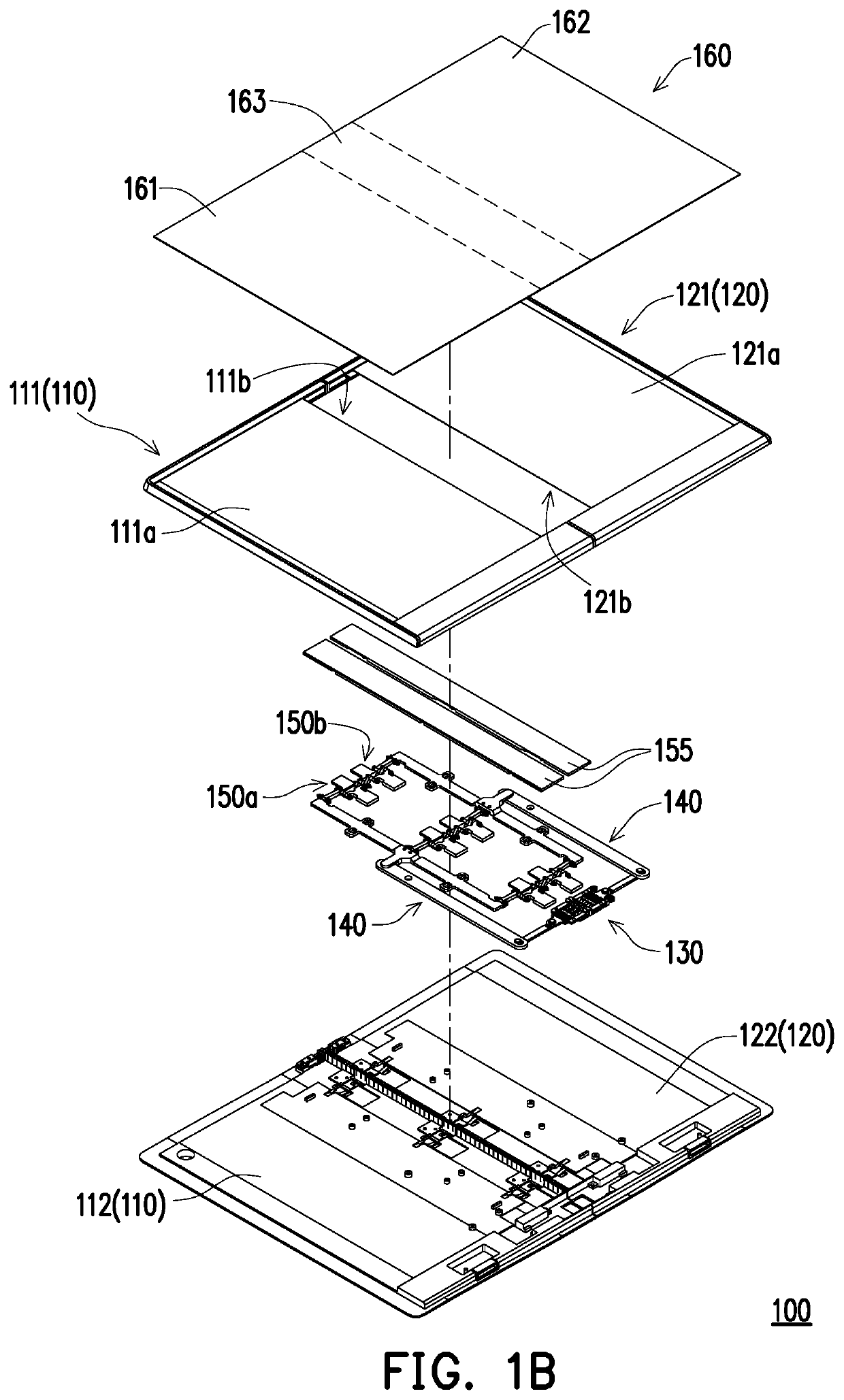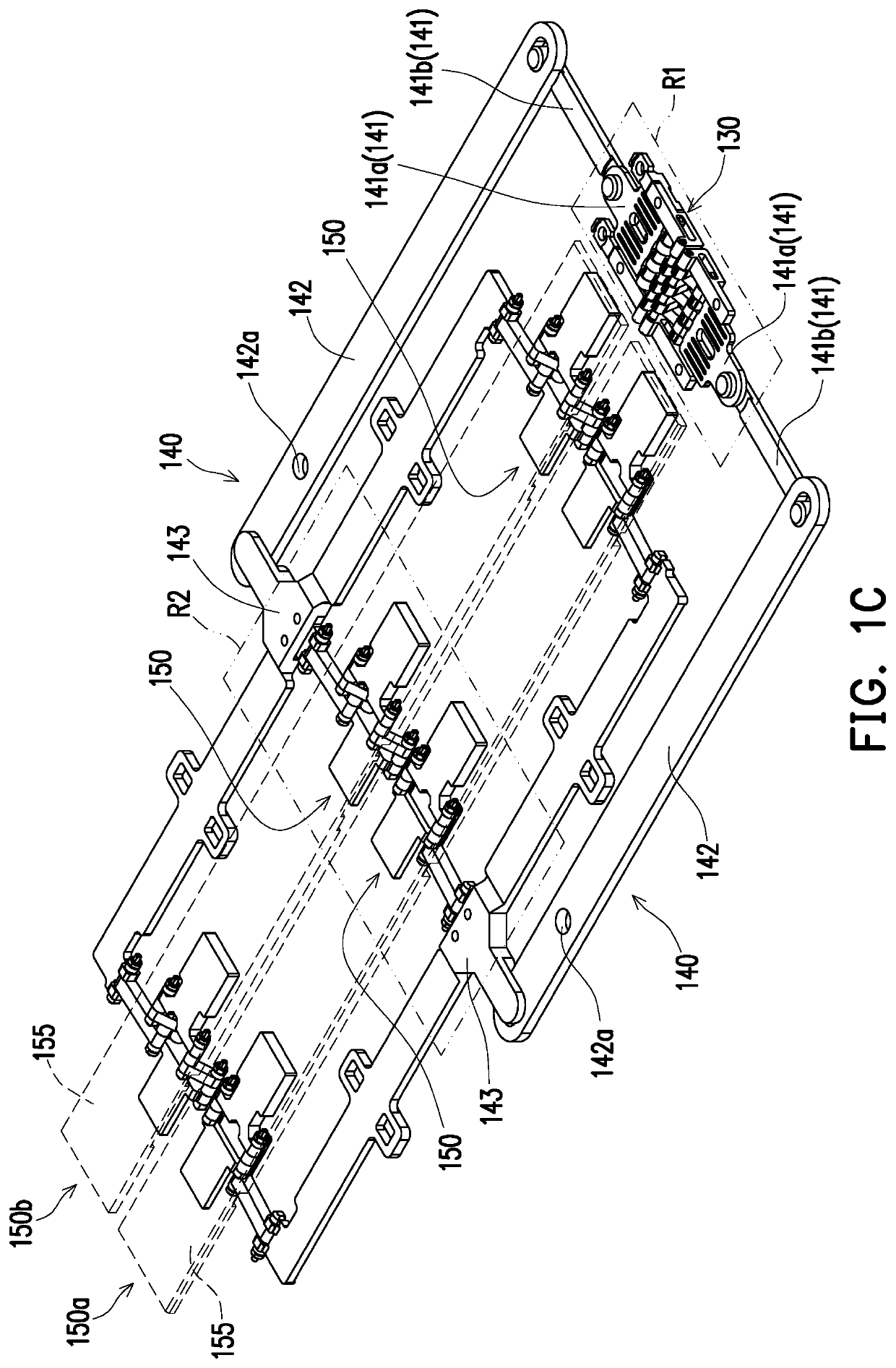Electronic device
- Summary
- Abstract
- Description
- Claims
- Application Information
AI Technical Summary
Benefits of technology
Problems solved by technology
Method used
Image
Examples
Embodiment Construction
[0032]FIG. 1A is a schematic diagram illustrating an electronic device in an unfolded state according to an embodiment of the disclosure. FIG. 1B is a schematic explosive diagram illustrating the electronic device in FIG. 1A. FIG. 1C is a schematic diagram illustrating the hinge mechanism, the driving mechanisms, and the lifting mechanisms in FIG. 1B. Particularly, as shown in FIG. 1C, support plates 155 are drawn by dashed lines to clearly show the other components of the lifting mechanisms 150.
[0033]First, please refer to FIG. 1A to FIG. 1C. In this embodiment, the electronic device 100 is in an unfolded state, and the electronic device 100 may be a display, a tablet PC, a smart phone, or a part of a notebook computer. In detail, the electronic device 100 includes a first body 110, a second body 120, a hinge mechanism 130, two driving mechanisms 140, at least two lifting mechanisms 150, and a flexible panel 160. The first body 110 is connected to the second body 120 through the hi...
PUM
 Login to View More
Login to View More Abstract
Description
Claims
Application Information
 Login to View More
Login to View More - R&D
- Intellectual Property
- Life Sciences
- Materials
- Tech Scout
- Unparalleled Data Quality
- Higher Quality Content
- 60% Fewer Hallucinations
Browse by: Latest US Patents, China's latest patents, Technical Efficacy Thesaurus, Application Domain, Technology Topic, Popular Technical Reports.
© 2025 PatSnap. All rights reserved.Legal|Privacy policy|Modern Slavery Act Transparency Statement|Sitemap|About US| Contact US: help@patsnap.com



